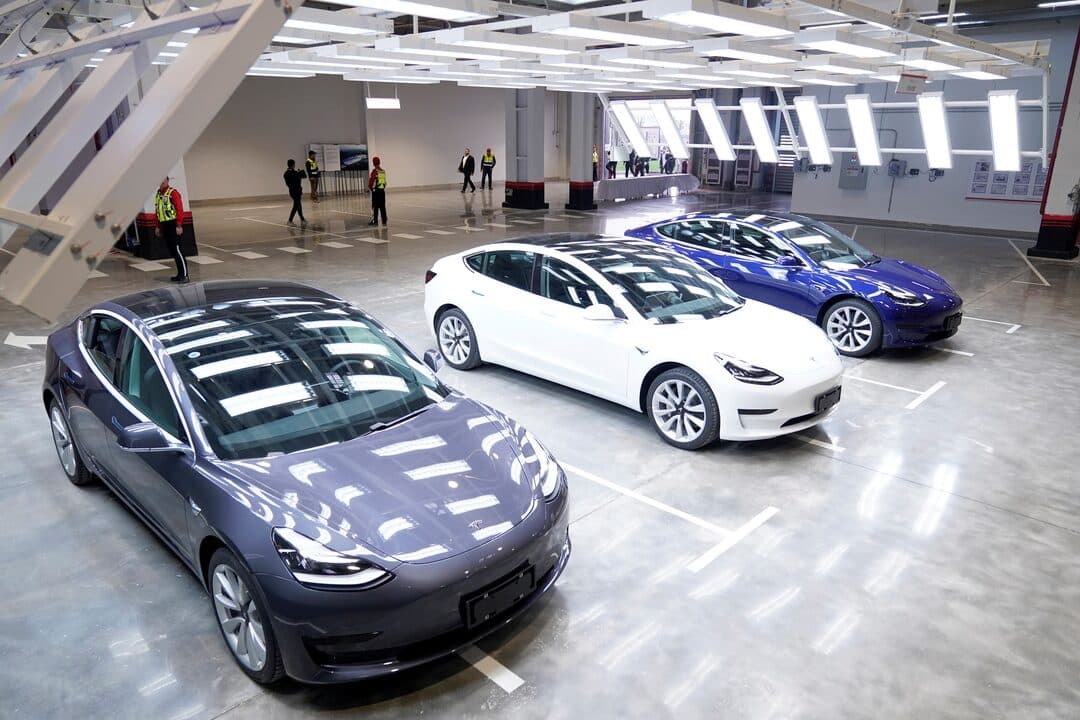Loading News Article...
We're loading the full news article for you. This includes the article content, images, author information, and related articles.
We're loading the full news article for you. This includes the article content, images, author information, and related articles.
Tesla has launched more accessible versions of its Model Y SUV and Model 3 sedan in the US, with starting prices of US$39,990 and US$36,990 respectively. This development could influence Kenya.

Tesla, led by CEO Elon Musk, has introduced what it terms 'affordable' variants of its popular Model Y SUV and Model 3 sedan in the United States. The Model Y Standard Rear-Wheel Drive starts at US$41,630, while the Model 3 Standard begins at US$38,630. These new offerings are part of Tesla's strategy to attract a broader range of buyers, though some analysts suggest the prices may still be too high to achieve a truly mass-market appeal, especially given previous indications from Musk about a sub-US$30,000 price point after incentives.
The introduction of these 'Standard' models involves some adjustments to interior features and battery capacity to achieve the lower price points. For instance, the Model Y Standard sees a reduction in battery capacity to 69.5 kWh and loses features like front ventilated seats and rear heated seats. Similarly, the Model 3 Standard is US$5,500 cheaper than its Premium Rear-Wheel Drive counterpart.
While these new Tesla models are aimed at the US market, their pricing strategy and features could have implications for the electric vehicle market in Kenya. Kenya has demonstrated a growing commitment to e-mobility, with the government launching the National E-Mobility Policy in March 2024. This policy aims to create an enabling environment for EV adoption, including tax incentives such as a reduction in excise duty on electric vehicles from 20% to 10% and exemption from Value Added Tax (VAT).
Despite these incentives, the adoption of electric vehicles in Kenya has been relatively slow, primarily due to high import taxes and limited charging infrastructure. For example, a new Tesla Model 3 can cost upwards of KES 10 million in Kenya, more than double its price in Europe. However, the number of registered EVs in Kenya has been increasing, with 3,753 registered by the end of 2023, a five-fold increase from 2022.
The Kenyan government has set ambitious targets for EV adoption, aiming for electric vehicles to constitute 5% of all newly registered vehicles by the end of 2025 and 100% EV adoption by 2040. To support this transition, efforts are underway to expand charging infrastructure. Kenya Power and Lighting Company (KPLC) plans to install 45 new charging stations across six counties in the coming year, with a long-term goal of 10,000 chargers nationwide by 2030.
Private sector players like BasiGo, focusing on electric buses, and Roam Electric, developing electric motorcycles and buses for the African market, are also contributing to the growth of the EV ecosystem in Kenya. Local assembly of electric vehicles is also being encouraged through government policies and incentives.
The high upfront cost of electric vehicles remains a significant barrier for many Kenyan consumers. While the government has implemented tax incentives, the overall cost, including import duties and other fees, still makes EVs considerably more expensive than their internal combustion engine counterparts.
However, the long-term savings associated with lower running costs due to cheaper electricity and reduced maintenance are a compelling factor for EV adoption in Kenya. Kenya's electricity grid, largely powered by renewable sources, offers a sustainable and cost-effective charging solution.
The long-term impact of Tesla's new 'affordable' models on the global EV market, and specifically on emerging markets like Kenya, remains to be seen. While the lower price points in the US are a step towards broader accessibility, the significant cost difference when importing these vehicles into Kenya, even with existing tax incentives, presents a challenge. The effectiveness of current government incentives in truly making EVs competitive with traditional vehicles for the average Kenyan consumer is also a point of ongoing discussion.
The coming months will be crucial for observing how the Kenyan government's e-mobility policies translate into tangible growth in EV adoption. Key indicators to watch include the expansion of charging infrastructure beyond major urban centers, the introduction of more affordable EV models from various manufacturers in the Kenyan market, and the continued effectiveness of tax incentives in reducing the total cost of EV ownership. Further private sector investments in local EV manufacturing and assembly will also be vital for accelerating Kenya's transition to a greener transport sector.